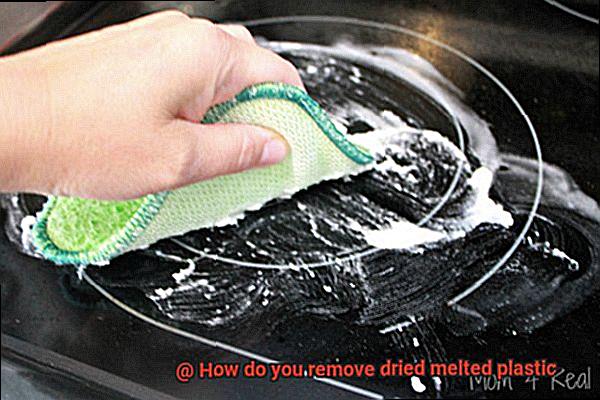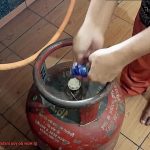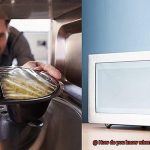Imagine this: you’re cooking up a storm in the kitchen when suddenly, you realize that you’ve left a plastic container on the stove. You rush over to it, but it’s too late – the plastic has melted and hardened into an unyielding mess. Your heart sinks as you try to scrub it off with soap and water, only to find that it won’t budge.
Don’t worry – we’ve got your back. Removing dried melted plastic may seem like an insurmountable challenge, but fear not – there are several methods that can help you tackle this stubborn issue.
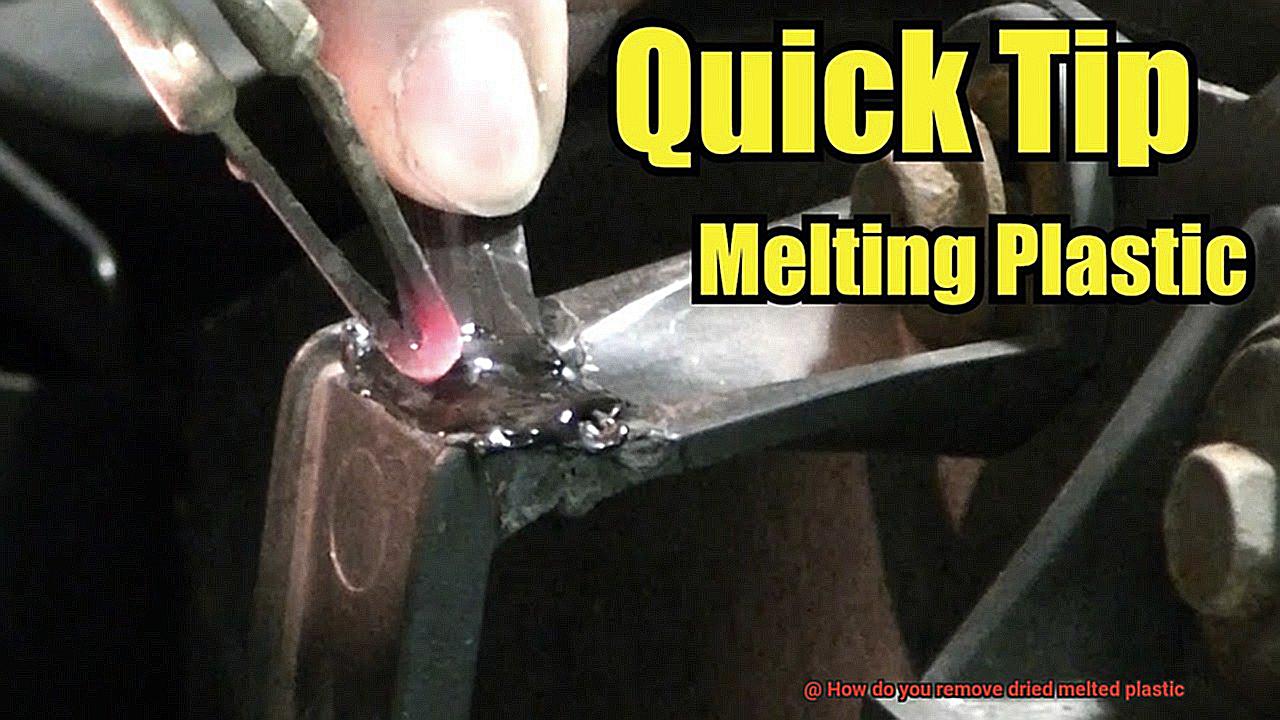
In this blog post, we’ll explore some of the most effective techniques for removing melted plastic from various surfaces. Whether you need to clean up a spatula or get rid of a sticky mess on your iron, we’ve got you covered.
From using household items like vinegar and baking soda to specialized products such as solvent cleaners and heat guns, we’ll show you how to get rid of that pesky melted plastic once and for all.
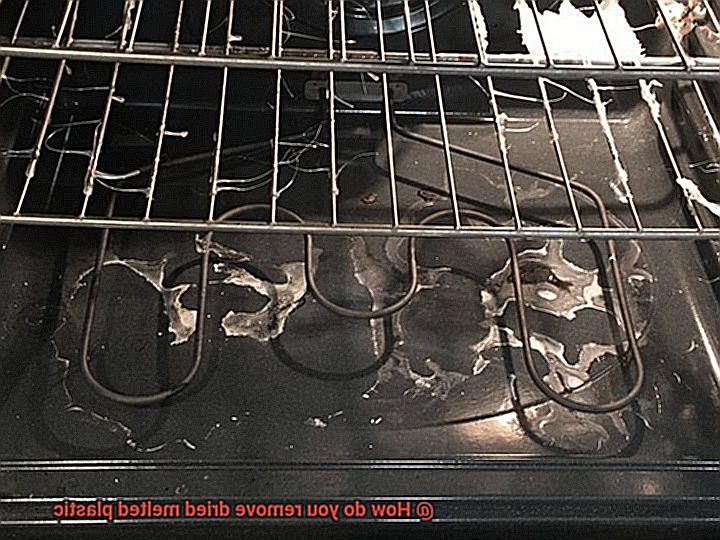
But wait – there’s more. We’ll also provide tips on how to prevent plastic from melting in the first place. With just a few simple precautions, you can avoid this headache altogether.
So if you’re ready to say goodbye to dried melted plastic forever, keep reading for our ultimate guide on how to remove it from any surface.
Contents
What is Dried Melted Plastic?
Dried melted plastic is a common issue that many people face when they accidentally leave plastic items on hot surfaces or use them near heat sources. This sticky mess can be frustrating to deal with as it hardens and becomes difficult to remove. However, with the right tools and techniques, removing dried melted plastic can be a breeze.
It’s important to note that the type of plastic and the surface it has adhered to will affect the removal process. Therefore, it’s crucial to identify the surface type before attempting to remove the plastic. Here are some tips for removing dried melted plastic from various surfaces:
Hard Surfaces
For surfaces like metal or glass, a scraper or razor blade is the best tool to remove the plastic. Be gentle and avoid scratching the surface while doing this. If there are any stubborn bits of plastic left, use a solvent like acetone or rubbing alcohol to remove them.
Soft Surfaces
For soft surfaces like fabric or carpet, heat is needed to soften the plastic before it can be removed. Use a hairdryer or clothes iron set on low heat to apply heat to the affected area. Once the plastic is softened, gently scrape it away using a plastic spatula or credit card. Any remaining residue can be removed with a solvent like nail polish remover or rubbing alcohol.
Plastic Surfaces
If the plastic has adhered to a plastic surface like a cutting board or Tupperware container, use a mixture of baking soda and water. Create a paste with one part baking soda and one part water, apply it to the affected area and let it sit for 10-15 minutes. Then gently scrub away the plastic with a soft-bristled brush. Any remaining bits of plastic can be removed with a solvent like acetone or rubbing alcohol.
It’s crucial to test any solvents or cleaning products on an inconspicuous area first to ensure they don’t cause any damage to the surface. With patience and persistence, removing dried melted plastic from almost any surface is possible.
Identifying the Type of Surface
Fear not. With the right tools and techniques, removing dried melted plastic can be a breeze. However, before you start, it’s crucial to identify the type of surface you’re dealing with to avoid causing any further damage.
Examining the surface is the first step in identifying the type of surface. You need to take a close look and determine what material it is made of. Is it a hard or soft surface? Is it porous or non-porous? Is it natural or synthetic? These are some of the key questions that can help you determine the type of surface.
If identifying the surface visually proves difficult, you can consult the manufacturer’s instructions or do some research online. Knowing the type of surface is essential because using the wrong method or product can cause further damage, making the removal process even more challenging and costly.
Once you have identified the type of surface, you can proceed with choosing the appropriate method and products for removing the dried melted plastic. Here are some effective methods for removing dried melted plastic from different types of surfaces:
For hard surfaces like metal or glass, a scraper or razor blade would work well. For soft surfaces like fabric or carpet, heat is needed to soften the plastic before scraping it away using a plastic spatula or credit card.
Plastic surfaces like cutting boards or Tupperware containers require a mixture of baking soda and water to create a paste that will help remove the plastic. Additionally, delicate surfaces like hardwood floors require gentle solutions like rubbing alcohol or vinegar to remove the melted plastic without damaging the surface.
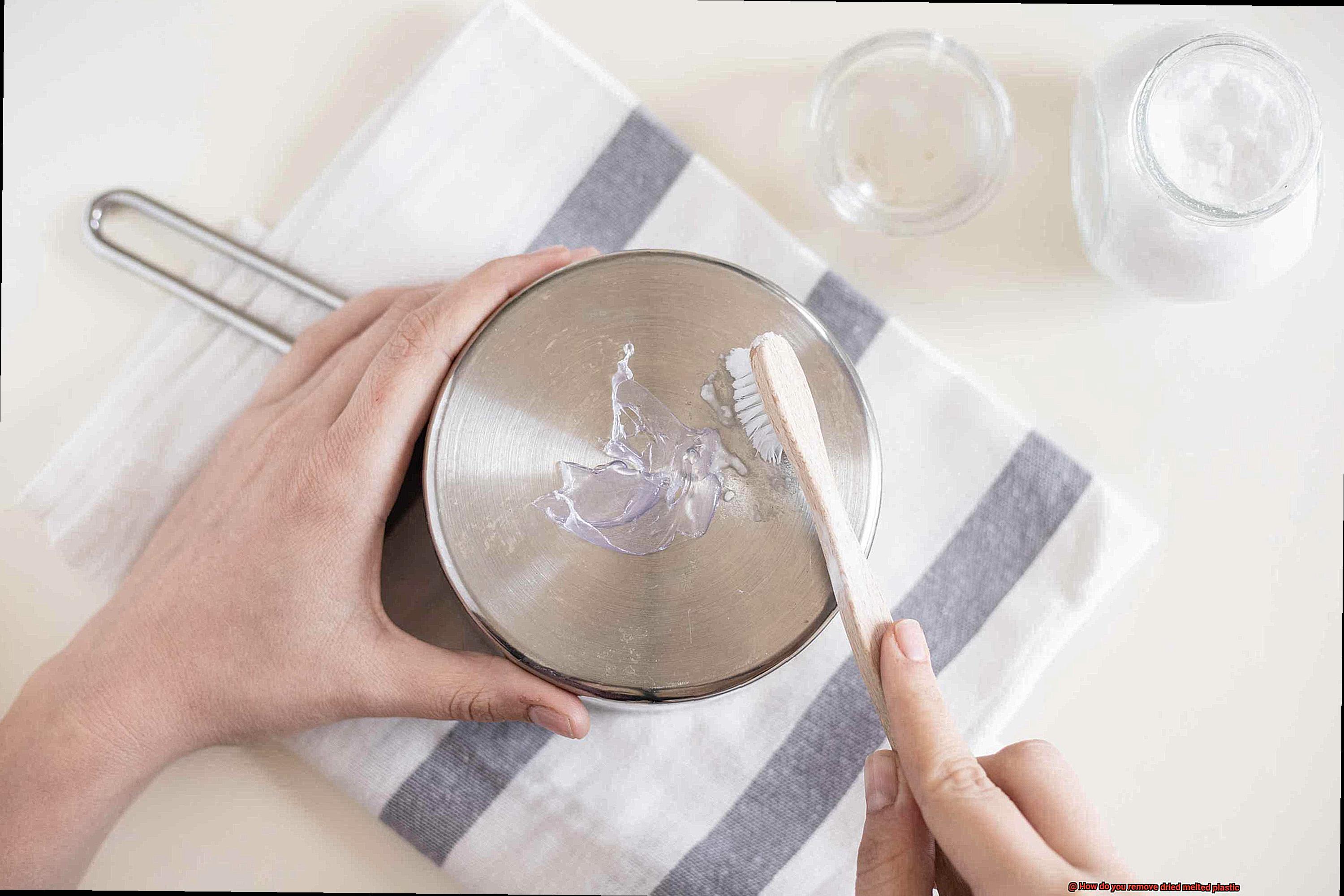
Removing Dried Melted Plastic from Hard Surfaces
First things first, it’s vital to identify the type of surface you’re working with. If it’s a hard surface like ceramic, metal, or glass, using a heat gun or hairdryer can work wonders. Apply heat to the plastic until it softens and then use a plastic scraper or putty knife to carefully scrape it off. However, do exercise caution as high heat can damage certain materials such as wood or plastic surfaces. In such cases, opt for solvent-based cleaners like acetone or nail polish remover to dissolve the plastic gently.
It’s imperative to use solvents in a well-ventilated room and wear protective gloves since they can be harmful if inhaled or come into contact with your skin. For tougher stains, gently scrub the surface with abrasive materials like sandpaper or steel wool. But bear in mind, refrain from using harsh chemicals or abrasive materials on delicate surfaces like painted walls or furniture as they can cause permanent damage.
For those who prefer convenience over DIY methods, there are commercial products available specifically designed for removing melted plastic from hard surfaces. These products can be easily purchased online or at hardware stores and come with detailed instructions on safe and effective use.
Removing Dried Melted Plastic from Soft Surfaces
We’ve all experienced that sinking feeling when we realize that a plastic bag or container has melted onto a soft surface. It can feel like an impossible task to remove it, but fear not. As an expert in removing dried melted plastic from soft surfaces, I’m here to share some invaluable tips and tricks to make the process easier.
Firstly, it’s essential to identify the type of soft surface you’re dealing with. Different materials require different removal methods, so take note of whether you’re dealing with fabric, leather, or vinyl.
If it’s fabric such as clothing or carpet, start by using a dull knife or spoon to scrape off as much of the dried plastic as possible. Then, apply rubbing alcohol or nail polish remover to the affected area and let it sit for a few minutes before blotting it with a clean cloth. Repeat this process until the plastic is removed entirely.
For leather surfaces, gently rub the affected area with a mixture of warm water and mild soap until the plastic starts to soften. Then use a dull knife or spoon to scrape off as much of the plastic as possible. Finish by applying leather conditioner to restore the surface’s natural oils and prevent any damage caused by the removal process.
Vinyl surfaces such as car seats or flooring require a hairdryer on its highest setting to soften the plastic. Once it has softened, use a dull knife or scraper to carefully remove as much of the plastic as possible. Finish by wiping down the surface with rubbing alcohol or vinegar to remove any remaining residue.
Removing dried melted plastic from soft surfaces requires patience and persistence. The process could take several attempts and may require some elbow grease, but don’t give up. Always remember to test any cleaning solutions on an inconspicuous area first to avoid causing damage.
Removing Dried Melted Plastic from Plastic Surfaces
Fear not. With the right tools and techniques, you can easily rid your surface of dried melted plastic. As an expert on this topic, I have compiled some research notes to help guide you through this process.
Assessing the extent of the damage is the first crucial step. If the plastic has only lightly melted onto the surface, then a plastic scraper or credit card can be used to remove it. However, if the plastic has deeply penetrated the surface, then a more intensive method is required.
One effective method is to use a heat gun or hairdryer. Holding the heat source approximately 6 inches away from the affected area, heat the plastic until it becomes soft and pliable. Then, gently scrape away as much of the melted plastic as possible using a plastic scraper or credit card. It’s important to avoid overheating the area as this can cause irreversible damage to the surface.
If heating is not an option, solvents like acetone or nail polish remover can be used instead. It’s important to test a small and inconspicuous area first to avoid any damage or discoloration. Apply the solvent onto a cloth and rub it onto the melted plastic until it dissolves. Once dissolved, use a clean cloth to wipe away any residue.
In some cases, sandpaper may be required for any remaining traces of melted plastic. Use a fine-grit sandpaper and gently sand away at the affected area until all traces of melted plastic have been removed. Be careful not to over-sand as this can cause damage to the surface.
Testing Solvents and Cleaning Products
Say goodbye to pesky melted plastic stains with the help of effective solvents and cleaning products. But before you apply any solution to the entire surface, it’s crucial to test it first on a small area to ensure that it won’t cause any damage.
Acetone is a strong solvent commonly used for removing melted plastic. It dissolves plastic effectively, but it can also dissolve some types of finishes or paint. That’s why it’s important to test it first on a small area before using it on the entire surface. Rubbing alcohol is another effective solvent that can break down the plastic’s molecular structure, making it easier to remove. Like acetone, it should also be tested first on a small area before use.
Aside from solvents, there are also cleaning products designed specifically for removing melted plastic. These products often contain a combination of solvents and other chemicals that can break down the plastic’s molecular structure and make it easier to remove. However, it’s important to follow the manufacturer’s instructions when using these products and test them on a small area first.
When testing solvents and cleaning products, always prioritize safety by wearing protective gloves and working in a well-ventilated area. Remember, testing is essential to ensure that the solution is effective without causing any damage to the surface.
In summary, here are the sub-topics:
- Solvents: Acetone and rubbing alcohol
- Cleaning products: Combination of solvents and chemicals
- Importance of testing before applying to entire surface
- Prioritizing safety: Wearing protective gloves and working in a well-ventilated area
Tips for Successfully Removing Dried Melted Plastic
Removing dried melted plastic can be a frustrating and time-consuming task, but with the right techniques and tools, it can be done successfully. Below are five sub-sections that explain the various tips for removing melted plastic from different surfaces.
Consider the Surface Type
Before attempting to remove melted plastic, it’s important to identify the type of surface you’re working with. Different surfaces require different methods of removal. Delicate surfaces like plastic or paint require a gentler approach than hard surfaces like metal or glass.
Use Heat
Applying heat to the affected area is an effective way to remove melted plastic. Use a hairdryer or heat gun to soften the plastic and then gently scrape it off with a plastic scraper or credit card. This technique works well on hard surfaces but may not be suitable for delicate ones.
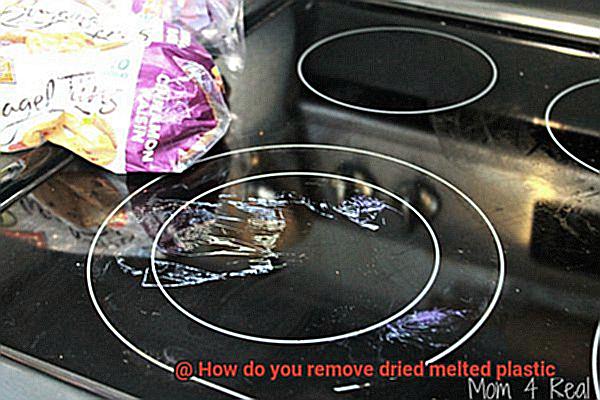
Use Solvents
Solvents like acetone or rubbing alcohol can dissolve the plastic, making it easier to remove. However, it’s important to test the solvent on an inconspicuous area first to ensure it doesn’t damage the surface. Be sure to use solvents in a well-ventilated area and wear gloves to protect your skin.
Use Lubricants
Lubricants such as WD-40 or cooking oil can also be effective in removing melted plastic. Apply a small amount of lubricant to the affected area and rub gently with a cloth until the plastic comes off. This technique works well on hard and delicate surfaces alike.
Be Patient
Removing melted plastic takes time and patience. Rushing the process can cause damage to the underlying surface. Take your time and use gentle pressure when removing the melted plastic.
nHtkvQYinzU” >
Conclusion
In conclusion, removing dried melted plastic can be a daunting task, but fear not. With the right tools and techniques, it can be done successfully. From hard surfaces like metal or glass to soft surfaces like fabric or carpet, and even plastic surfaces like cutting boards or Tupperware containers, there are effective methods for removing melted plastic from almost any surface.
Before diving in, it’s crucial to identify the type of surface you’re working with. This will help you to choose the appropriate method and product to avoid causing further damage. For hard surfaces, heat guns or hairdryers are your best friends. On delicate surfaces, solvents like acetone or rubbing alcohol are highly effective for dissolving plastic.
Testing solvents and cleaning products on an inconspicuous area first is a must-do before attempting to remove any melted plastic. This will ensure that they won’t cause any damage. Additionally, patience is key when removing melted plastic as rushing the process can cause irreversible damage.
Remember to prioritize safety by wearing protective gloves and working in a well-ventilated area. By following these tips and tricks and persevering through stubborn stains, you’ll be able to restore your surfaces to their former glory in no time.

